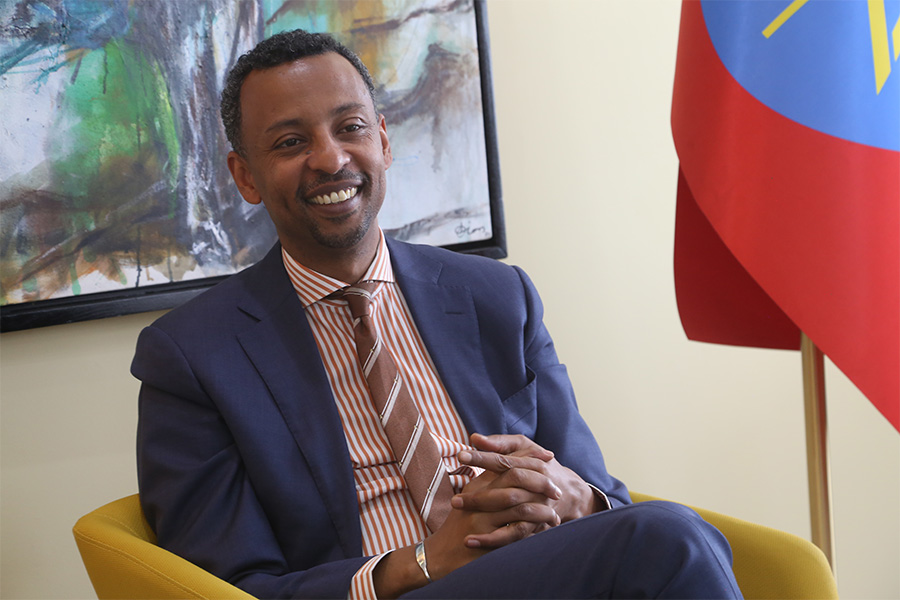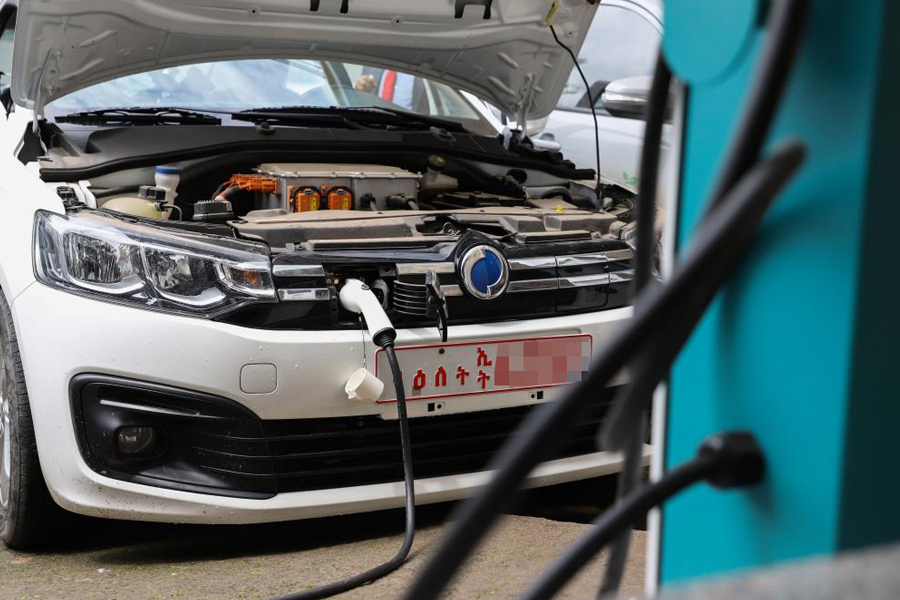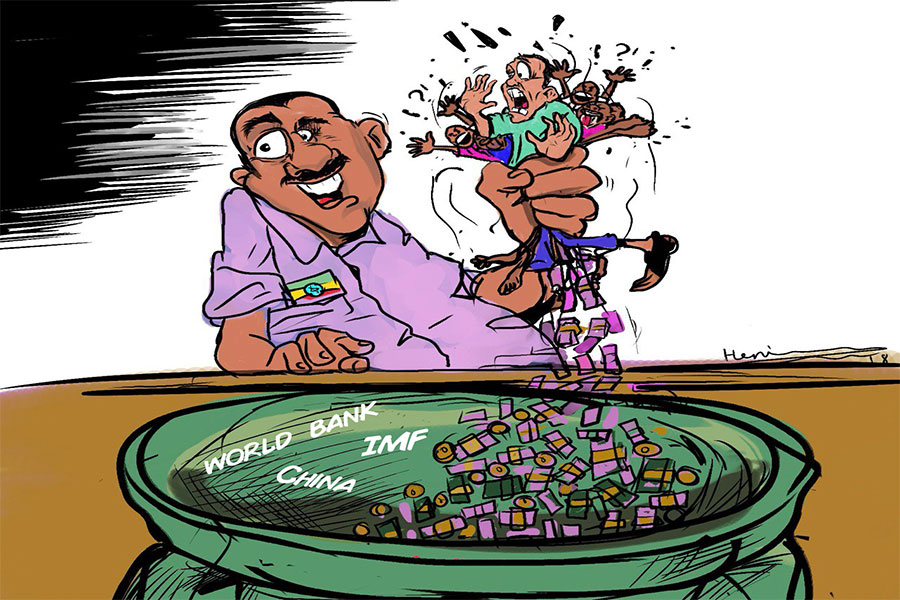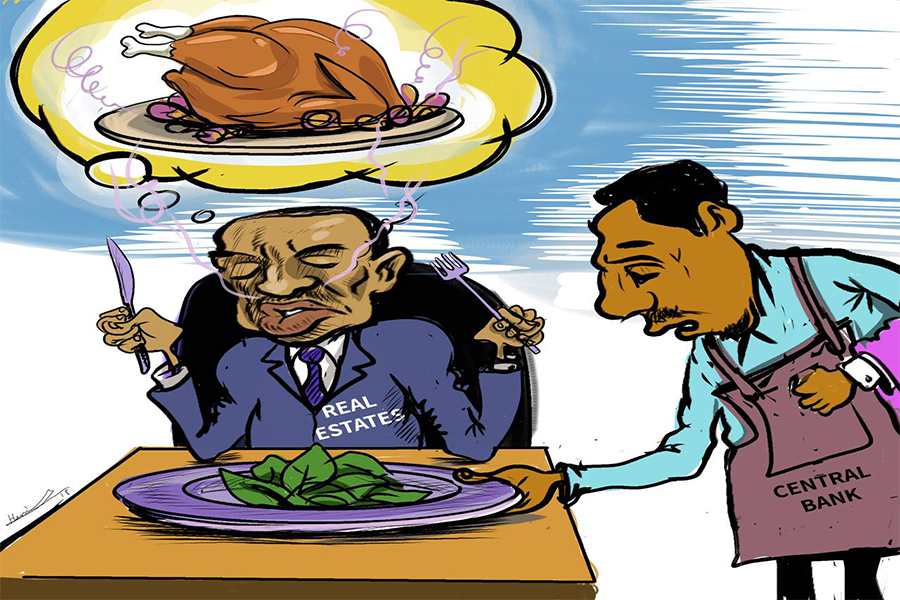Abay Bank has racked up noteworthy expansions in deposits, assets, and overall revenue. Yet its impressive growth trajectory contained some cautionary signals about profitability pressures in an increasingly competitive market. The Bank’s net profit margin on total assets slipped to 2.26pc in 2023/24, trailing a common industry benchmark of three percent and declining from the 3.82pc mark recorded the previous year.
Part of the margin squeeze resulted from soaring costs, particularly interest outlays, which in 2023/24 ate up nearly one-third of the Bank’s overall expenses. This narrowing of spreads mirrored a market environment where deposit rates often lag behind inflation, forcing banks to steer tight corridors between relatively low-yielding assets and rising obligations. Abay Bank’s profit margin erosion emerged when its net profit dropped 3.2pc to 1.5 billion Br, accompanied by a 22pc fall in earnings per share (EPS), down from 360 Br, though it still is higher than private banks' mean.
Abay Bank President, Yehuala Gessesse, who has run the Bank for nine years, sees the dampened performance partly driven by monetary policy constraints that stifled loan growth. According to him, a substantial portion of the Bank’s income is interest-based, making the Bank especially sensitive to credit restrictions.
“Due to the monetary policy restriction and other issues, the loan growth was low,” he conceded.
However, Abdulmenan Mohammed (PhD), a financial analyst based in London, blamed the effect of heightened expenditures, from a 33.1pc climb in interest expenses to a 27.7pc jump in wages and benefits, which reached 2.51 billion Br. Other operating expenses soared 48.2pc to 1.5 billion Br, unveiling heavier spending on promotion, insurance, and IT support. These costs led to a 6.4 billion Br outlay, up 30pc from a year earlier.
“The massive expansion of expenses undermined the revenue growth, resulting in a reduction in net profit,” Abdulmenan said.
He warned Yehuala and his team to exercise caution. Yehuala, who has a postgraduate degree in business administration and 25 years of banking experience, defended his growth strategy, arguing that investments in IT and digitisation will make Abay Bank competitive by providing unparalleled customer service.
“We prefer to invest in IT and accessibility such as branch expansion, ATM and POS,” he told Fortune. “But most of the costs are fixed costs.”
In the 2022/23 operational year, the Bank’s deposits surged 29pc to 41.8 billion Br, leading to a net profit of 2.1 billion Br, a 63pc growth. It was buoyed by climbing revenues that hit 7.1 billion Br, 78pc of which stemmed from interest income. Total assets also rose by 35pc, reaching 55 billion Br. The results were attributed to multi-pronged measures, such as enlarging the customer base to 2.5 million, launching 110 new branches with a strong focus on interest-free banking windows, and doubling mobile banking subscribers to 1.28 million.
Last year, Abay Bank’s revenue kept pace with revenue growth of 19pc to 8.4 billion Br; however, it was overshadowed by ballooning expenses that eroded net profit. The Bank's executives defend their strategy of investing in technology, digitisation, and expansion to capture more market share. They opened 59 new branches last year, bringing the total to 542, but several locations in the Amhara Regional State remained underutilised due to ongoing conflicts.
The Bank’s deposit base swelled by 11 billion Br, mirroring the rise in interest expenses amid heightened competition for liquidity.
Interest on loans, advances, and Central Bank bonds rose 20.2pc to 6.67 billion Br. Service charges and commissions edged up 2.8pc to 1.22 billion Br, while gains on foreign exchange dealings jumped 24.2pc to 192.45 billion Br. The decline in loan impairment provisions, from 219.3 million Br to 86.4 million Br, showed improved asset quality, a silver lining that could address risk for Abay Bank, whose total assets climbed 20.6pc to 66.42 billion Br in 2023/24.
The Bank disbursed 41.11 billion Br in loans, up 12.7pc, and mobilised 52.62 billion Br in deposits, an increase of 26pc.
Though cost pressures suppressed Abay Bank’s bottom line, some shareholders applauded the management for strong capital and liquidity positions. Its paid-up capital jumped 27.3pc to a little over six billion Birr, lifting the Bank's capital adequacy ratio to 15pc, three percentage points higher than the previous year.
Board Chairperson Amlaku Asres (PhD) told the 4,537 shareholders gathered at the Interluxury Hotel, on Marshal Tito Road, that issues like inflationary headwinds, regional security concerns, and political uncertainties had weighed on the Bank's performance.
A shareholder, Fisseha Tekeste, called the results “commendable,” though he urged the Bank to consider merging with a more prominent institution for market consolidation.
"When we grow bigger, we become dominant," he told Fortune.
Another founding shareholder, speaking anonymously, praised the balance-sheet growth but raised concerns that returns have yet to catch up.
"It doesn't add up," he told Fortune.
Regulatory limits on lending have chipped away at Banks’ capacity to deploy capital, as the country’s financial sector prepares for foreign entrants. Such constraints, he argued, created a mismatch for domestic lenders aspiring to scale while bracing for external competition. Abay’s loan-to-deposit ratio fell from 87.3pc in 2022/23 to 78.1pc last year, a logical outcome under National Bank of Ethiopia (NBE) caps that constrained credit expansion.
The dip in this ratio coincided with a 41.7pc surge in Abay Bank’s cash and bank balances, lifting the share of total assets to 17.6pc from 15pc. According to the Bank's President, Abay carefully manages liquidity to maintain flexibility in the face of uncertain regulatory and macroeconomic realities. Labour costs also remain a major line item, with wage and benefit expenses totalling 2.51 billion Br in 2023/24, 39pc of overall expenses, and administrative outlays representing 18pc.
With over 10,000 employees and 1,636 new hires recruited last year to support its push for enhanced customer service, Abay Bank continued to build out physical infrastructure, betting on near-term expenditures for long-term scale.
However, analysts question the prudence of a 1.33pc provisioning ratio at a time when inflation, political uncertainty, and liquidity crunch could test borrowers’ repayment capacity.
Abay Bank’s performance showed industry-wide trends among the 30 private and two state-owned banks, which have expanded deposits by 16.3pc to 2.4 trillion Br. Private banks held 67.4pc of the 290.6 billion Br in aggregate capital, chipping away at the dominance of the state-owned Commercial Bank of Ethiopia (CBE), which still retains over a fifth of the industry's total capital. Abay Bank’s 20pc jump in assets could mark the ascendance of private banks, whose loan portfolios and deposit mobilisation have seen double-digit rises.
The Bank’s deposit per branch was about 130.61 million Br in 2023/24, a respectable figure that displayed successful retail and commercial outreach. Profit per employee reached 146,541 Br in 2023/24, surpassing the industry's 10-year average, beginning in 2013. Over the past decade, private banks have outpaced state-owned peers in growth, even if they remain smaller in absolute size. Capital-to-asset ratios generally were around 13.5pc. Abay Bank’s was around 14pc, representing a prudent buffer, while its asset-to-equity ratio of about 7.12 displayed a moderate leverage approach.
According to analysts, these measures suggested Abay Bank, incorporated 14 years ago, is balancing ambition with regulatory caution.
Reliance on net interest income remains a cornerstone of the financial system. More than 74pc of Abay Bank’s operating income last year was derived from interest-based activities, a function of limited foreign exchange availability and still-nascent digital banking services that could generate fee income. Roughly 32.49pc of total costs stemmed from interest expenses, echoing stiff competition for deposits. The Bank's executives eye fee-based products and upgraded digital platforms as part of their “Journey to Greatness” plan, to broaden revenue sources and attract a tech-savvy segment of the population.
At the Mehal Gerji branch, Zelalem Dereje, its manager, oversees seven employees and credits teamwork for hitting goals in deposits, foreign exchange, and service quality. The branch caters to clients from corporate importers to small-scale retailers. One innovative feature is the "Muday Banking" system. Customers store cash from daily sales and deposit it at their convenience, a model Zelalem says saves them travels to the branch. It is an account capturing Abay Bank’s bid to tailor services for businesses operating on thin margins but seeking secure, convenient options.
“The key to the box is kept at the bank, allowing customers to deposit their funds when possible,” he told Fortune.
According to independent analysts, Abay’s long-term success depends on its ability to deepen non-interest income streams and improve efficiency. Although the Bank’s deposit base and capital cushions are robust, its persistent net profit margin squeezes reveal structural challenges. Rapid inflation, foreign exchange bottlenecks, and political unrest increase borrowers' risk of falling behind, testing Abay Bank’s credit quality. Yet management remains optimistic that investments in digital platforms, branch expansions, and staff training will ultimately pay off once policy constraints ease.
“We’re implementing well-crafted resource mobilisation and liquidity management strategies to sustain our liquidity position,” said Yehuala.
PUBLISHED ON
Dec 22,2024 [ VOL
25 , NO
1286]

Dec 22 , 2024 . By TIZITA SHEWAFERAW
Charged with transforming colossal state-owned enterprises into modern and competitiv...

Aug 18 , 2024 . By AKSAH ITALO
Although predictable Yonas Zerihun's job in the ride-hailing service is not immune to...

Jul 28 , 2024 . By TIZITA SHEWAFERAW
Unhabitual, perhaps too many, Samuel Gebreyohannes, 38, used to occasionally enjoy a couple of beers at breakfast. However, he recently swit...

Jul 13 , 2024 . By AKSAH ITALO
Investors who rely on tractors, trucks, and field vehicles for commuting, transporting commodities, and f...

Oct 18 , 2025
The political establishment, notably the ruling party and its top brass, has become p...

Oct 11 , 2025
Ladislas Farago, a roving Associated Press (AP) correspondent, arrived in Ethiopia in...

Oct 4 , 2025
Eyob Tekalegn (PhD) had been in the Governor's chair for only weeks when, on Septembe...

Sep 27 , 2025
Four years into an experiment with “shock therapy” in education, the national moo...